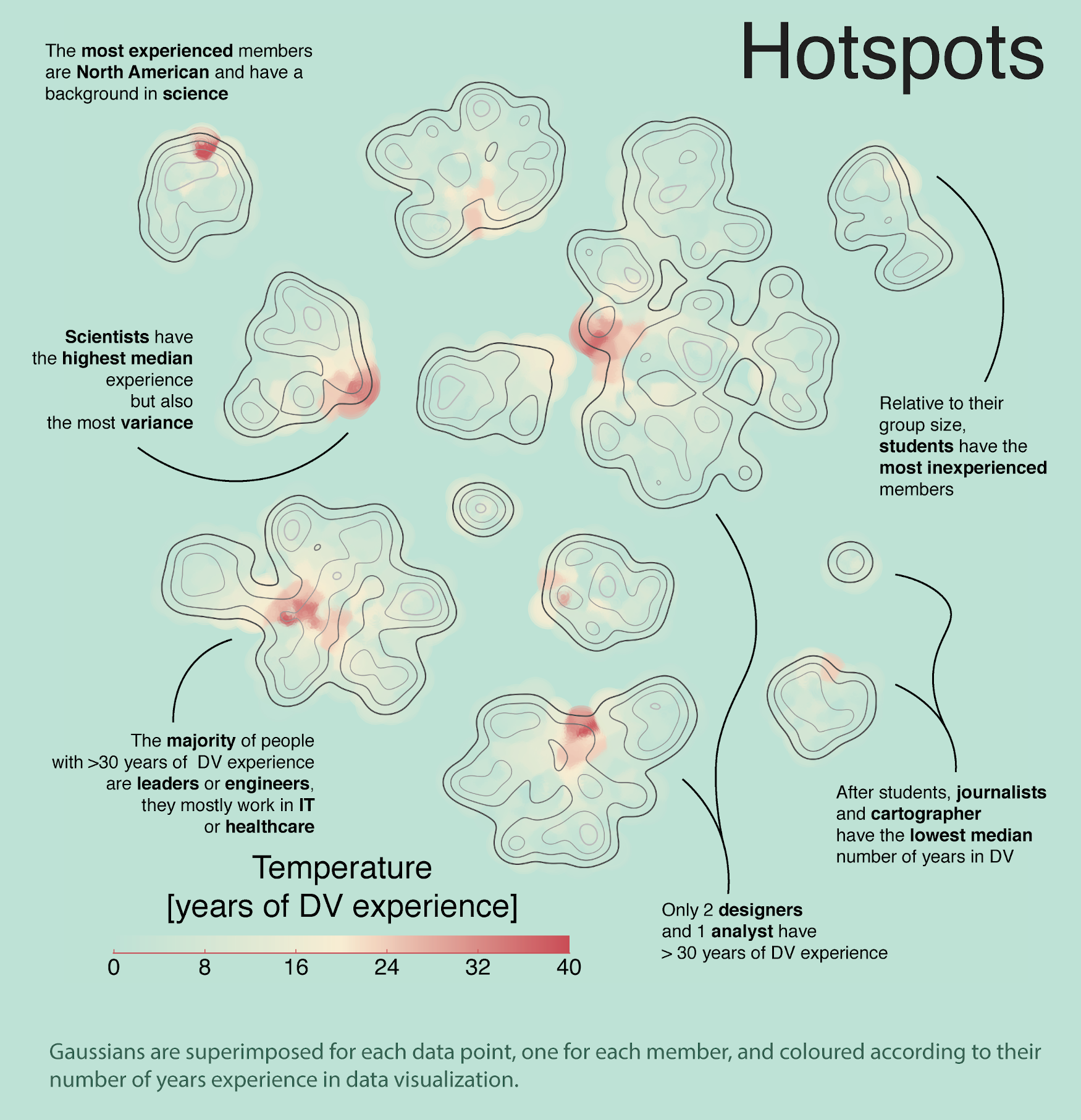The Data Visualization Society Atlas
January 11, 2022 | SOTI 2021 Challenge
DVS members are encouraged to take the data and design an original visualization to describe or explain the most interesting aspects of the survey.
This is my submission to the explanatory category, the Data Visualization Society Atlas. Click on the image to see the pdf.

The map was obtained by projecting the survey data onto a 2d-plane and extracting densities to obtain a continuous representation.
The visualization mimics a topographic map, where land represents areas of high data points density and the sea areas where points are scarce or absent. The size of landmasses is proportional to the number of members in each job role and the altitude corresponds to the density of points in a certain region, brought together by common answers to the survey.
Toponymy is associated with the most characteristic property of the members found in that area, may that be their continent of origin, the industry they work in or their background.
At glance, one can see how the majority of DVS members are analysts or work in a leadership role, while very few are cartographers or teachers. Most people come from North America or Europe, they studied maths or tech-related degrees. IT is the most popular industry.




